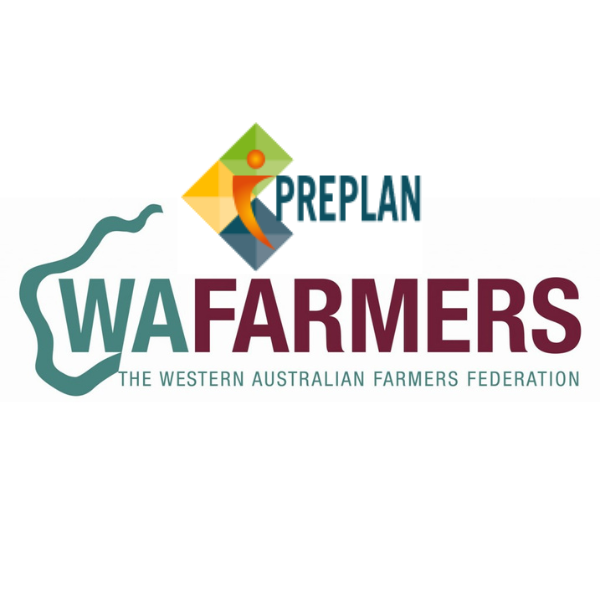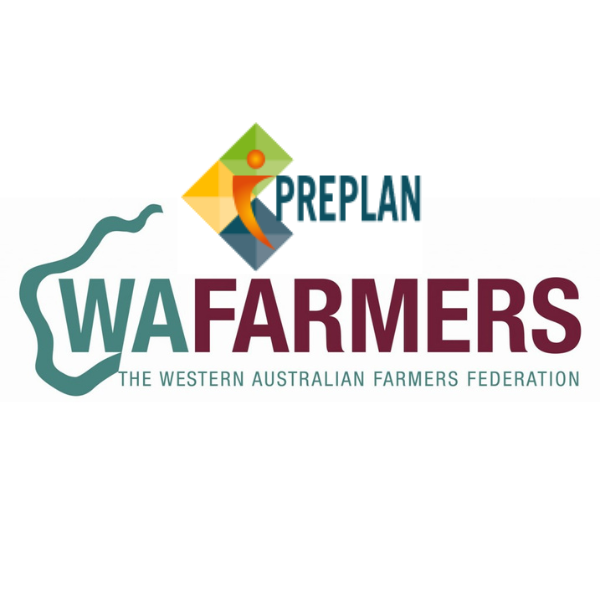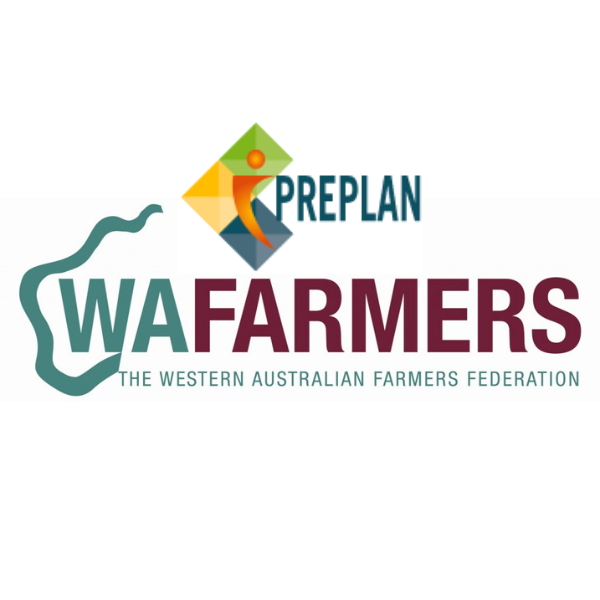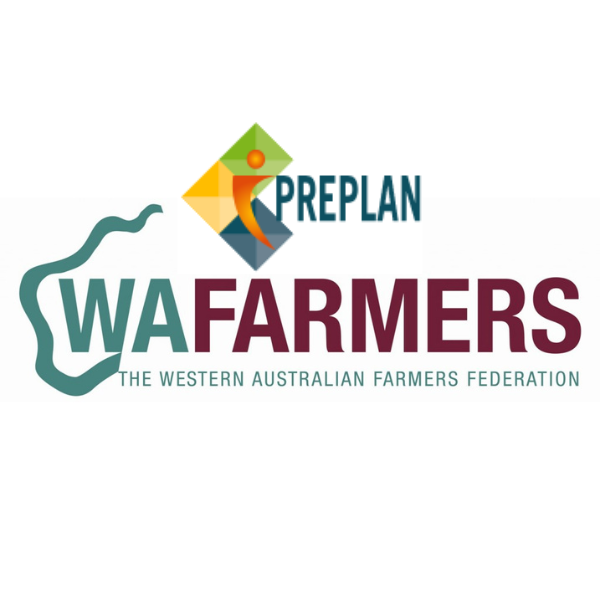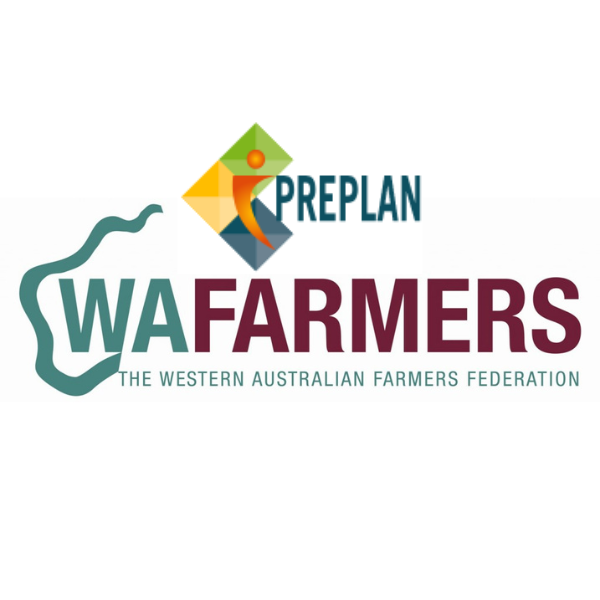Title Page
-
Site conducted
-
Conducted on
-
Prepared by
-
Location
-
References - Work Health and Safety Act 2020, Work Health and Safety (General) Regulations 2022, Worksafe WA guides & Publications, Farmsafe Australia, Australian Centre for Agriculture Health and Safety, University of Sydney and other relevant documentation available across Australia.
Disclaimer - The information provided in this document is not a service as provided by Section 26A Work Health and Safety Act 2020 and can only assist you in the most general way. This document does not replace your statutory requirement or legislation obligations under any relevant state and territory legislation that you are responsible for. WAFarmers or Preplan Pty Ltd is not liable in any form resulting from any action taken or reliance made by you on the information or material contained in this document which is of a general nature. Before relying on the material, users should carefully make their own assessment as to its accuracy, currency, completeness and relevance for their purposes, and should obtain own independent legal advice relevant to their particular circumstances. Notwithstanding anything contained therein, WAFarmers or Preplan Pty Ltd will not except or be liable in any form for any loss or other consequences (whether or not due to the negligence of the consultants, their servants or agents) arising out of the services rendered by the consultants. This document is copyright© to WAFarmers and Preplan Pty Ltd in all forms and aspects.
-
-
Every dangerous part (except operational areas) of fixed, mobile and hand held powered plant is securely guarded such that it is safe for use, and the highest level of guarding possible is being provided for operational use
-
The manufacturers operating instructions (manuals) are available
-
Procedures are in place to ensure all guards removed for maintenance or cleaning are replaced before machine is returned to work
-
Risk assessments are conducted and adequate hearing protection is worn when exposed to noisy activities
-
All workers have been instructed in correct lifting techniques
-
Alternative ways of lifting and carrying have been implemented, e.g. mechanical hoist, trolley. Training has been conducted on the potential hazards associated with animals and safe animal handling techniques
-
Safety glasses, gloves and ear muffs provided (at no cost to employees) where people are at risk of injury
-
Portable ladders are used and stored in a safe manner. Walkways and exits are kept clear
-
Hazards of waterways, dams and effluent ponds, including vehicle crossings have been addressed
-
Hazards associated with electric fences, wire straining and gate opening/closing have been addressed
-
Traffic is managed in such a way that persons are not placed at risk of injury from collision with, or run over by, vehicles in and around the workplace
-
The risks of hot water burns and scalds have been identified, and tasks are performed in a controlled way
-
Persons exposed to sun have adequate protection provided (at no cost to employees) e.g. long sleeves/pants, hats, sunscreen and sunglasses
-
The risks of contracting zoonoses such as Q fever have been managed through informing workers regarding its characteristics and risks; offer immunisation; and training on the correct use of control measures in the workplace
-
Suitable and maintained amenities are provided such as sanitary facilities and cool, clean drinking water
-
Persons required to work alone have established forms of contact should a medical or other emergency arise
-
Water tanks and other water storage units are secured against unauthorised access, especially by children
-
House dams and farm swimming pools have been fenced or warning signs attached
-
Decommissioned buildings, tanks and plant have been rendered safe by removal of energy sources; fencing; or other means as necessary to prevent unauthorised access
-
Adequate water pressure and water quality are provided to showers and eye wash facilities which are installed to be used in the event of chemical exposure
-
The stability and restraint of transported loads has been addressed to prevent load - slip, falling load and overloading
-
At night or in poor light there is access to suitable additional lighting to safely perform tasks
-
There are safe work procedures in place to prevent persons falling from heights or into dangerous situations
-
Ensure warning signs are in place to alert persons to hazards which may not always be obvious
-
Smoking in the workplace to be prohibited where there may be risk of combustion; or in enclosed areas
-
A register of all asbestos structures has been made to ensure persons working on these structures are advised of the presence of asbestos Risks associated with lighting or managing fires have been assessed
-
Emergency procedures are in place where there is a risk of fire at a workplace
-
Suitable and sufficient fire extinguishers and fire suppression equipment are provided; and where required, persons are trained in its use
-
The movement on foot of livestock on and across roads and railways is planned to ensure all hazards have been identified, and procedures are in place
-
All internal roads and laneways should be maintained in good condition. No person is at the workplace under the influence of drugs or alcohol; or consumes drugs or alcohol within the workplace
-
All workers, including casual and seasonal, have completed an induction. Workers are competent to carry out the tasks allocated to them. Supervision is ongoing to ensure workers are completing tasks safely
-
Workers understand the need to report hazards, near misses and injuries
-
Reportable incidents have been reported to WorkSafe?
-
I confirm I have completed this inspection
